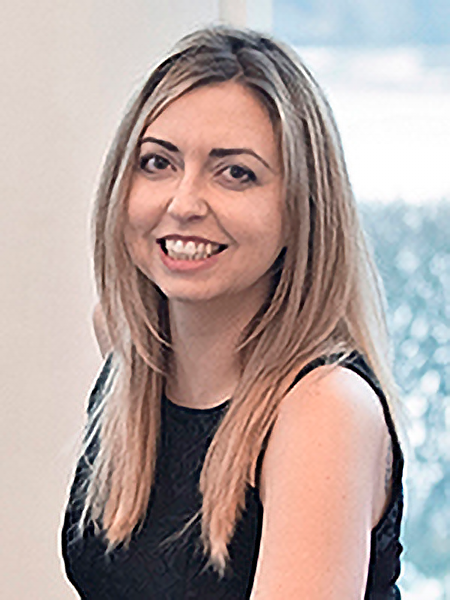Vivian Szymczuk, MD, is a second-year clinical fellow in the Pediatric Endocrinology Inter-Institute Training Program. Her work focuses on fibrous dysplasia/McCune-Albright syndrome, a rare and progressive bone disease.

Dr. Szymczuk wants to characterize the onset and progression of fibrous dysplasia over childhood. She hopes to identify which patients will develop more aggressive disease and determine an ideal therapy window.
Learn more about Dr. Szymczuk’s background in our September 2020 Clinical Corner column.
Dr. Szymczuk has served as the NICHD FelCom Clinical Fellow Representative for about six months. We’ve checked in with Dr. Szymczuk once again for her insights into the current needs of clinical fellows and her thoughts on the future of translational medicine.

Vivian Szymczuk, MD
What do you think has been the most pressing issue that clinical fellows have faced these past few years?
The pandemic has made life difficult for everyone. For clinical fellows, the inability to interact regularly with others has impaired the ability to network both at NIH and at conferences. It has also made it more difficult for fellows to make friends and become established in a new city.
What resources are available to help clinical fellows maintain connections with their colleagues while we navigate the final stages of the pandemic?
NIH has many resources available for clinical fellows to become and stay connected with each other. FelCom and ClinFelCom have several opportunities where you can become involved, whether it be through joining a committee or through group activities.
If you could go back in time, what advice would you give yourself as you embarked on your career to become a clinician-scientist?
Advice that I would give to anyone embarking on a career to become a clinician-scientist would be to be to get experience and be curious.
You can get experience by spending time in a lab and/or being part of clinical research as a postbac or medical student. There is nothing more valuable than hands on learning and the experience gained from being in that environment. Also, the skills acquired during that time may eventually become valuable later in your career.
Being curious and exposing yourself to multiple fields and multiple layers of knowledge (basic, translation, clinical) will help you apply more bench to bedside research and become both a better clinician and scientist.
What do you see as some of the most exciting frontiers in translational research?
Big data analytics and CRISPR-Cas9 technology are very exciting frontiers in translational research. Big data analytics techniques are being utilized to integrate enormous volumes of information to enable a complex-systems understanding of disease pathology, forming the foundation of a new era of precision medicine. CRISPR-Cas9 technology will lead to cures for many devastating genetic and other disorders that currently require intensive management.
About the Clinical Fellow Representative
An Institutes and Centers (IC) clinical representative is a clinical fellow who serves on the NIH-wide Fellows Committee (FelCom) on behalf of the institute’s clinical fellow population. In general, most institutes have one basic science representative and one clinical representative. Representative appointments last for 12 months and can be renewed for an additional year.
Responsibilities of the IC representative include attending all scheduled FelCom meetings, participating on a subcommittee, disseminating information to the fellows in the IC, communicating concerns to the committee from the IC’s fellows, and coordinating the distribution of information via subcommittees.
